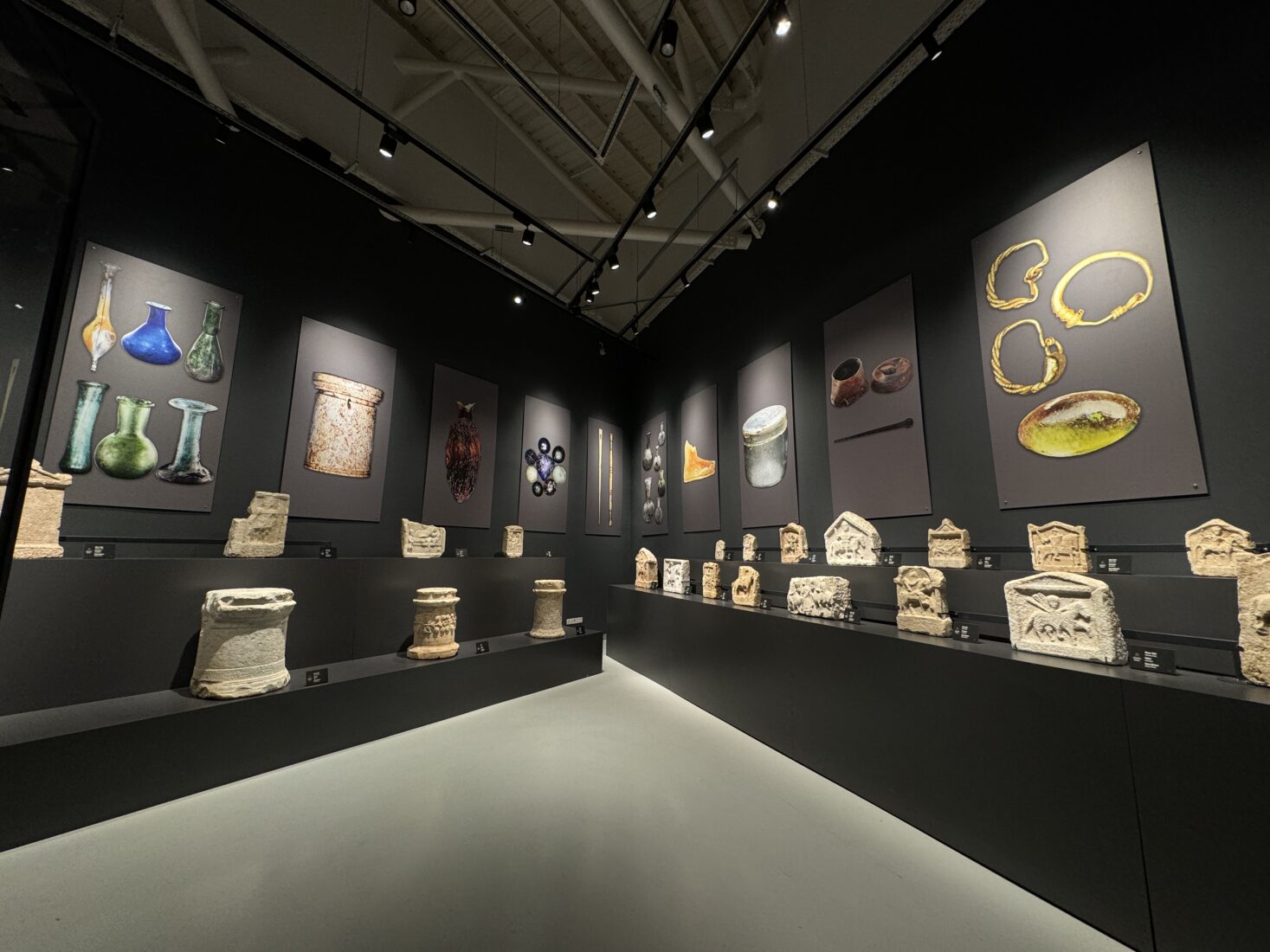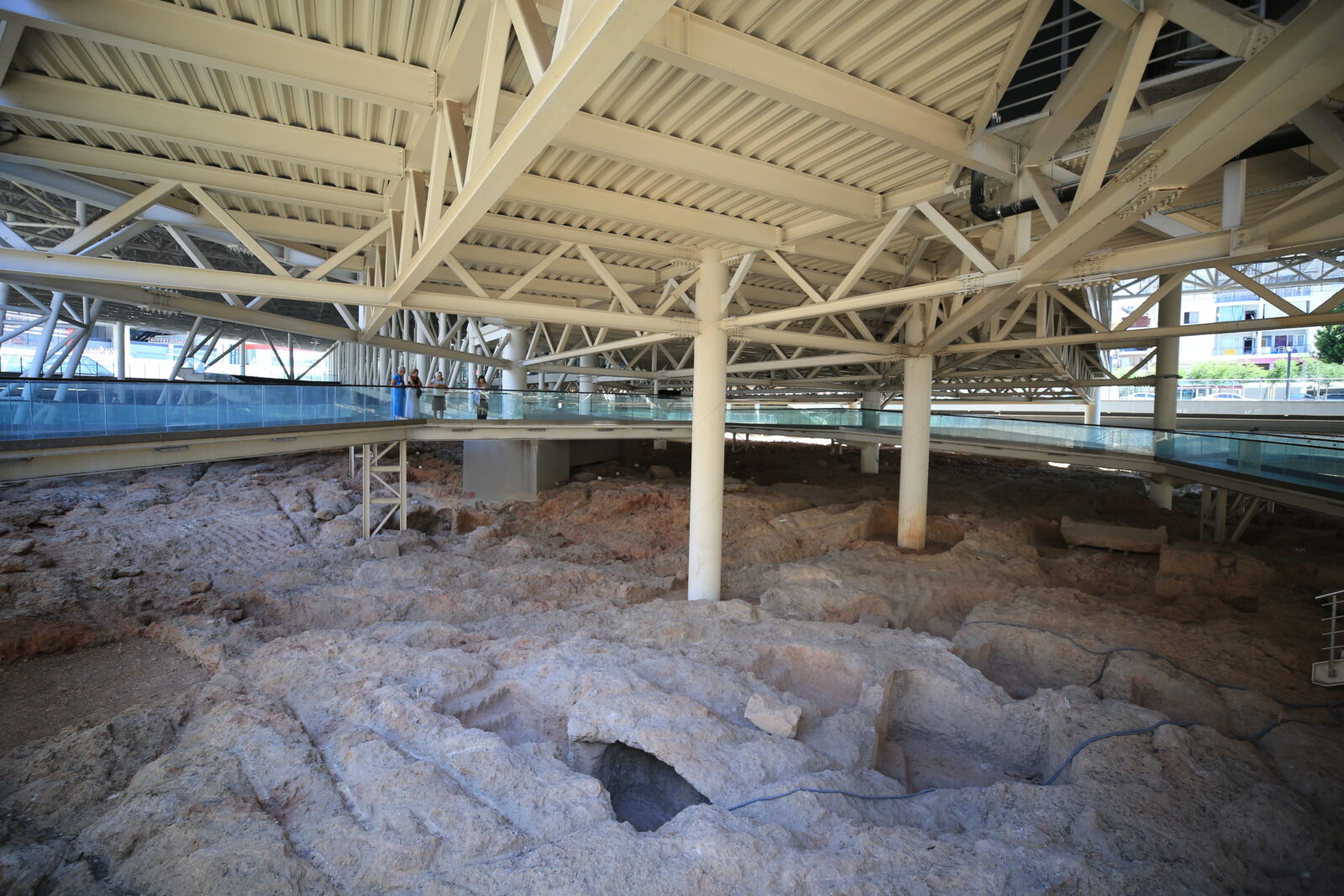Türkiye’s first necropolis museum illuminates 2,300 years of history
 Antalya Necropolis Museum, Türkiye, September 11,2024 (AA Photo)
Antalya Necropolis Museum, Türkiye, September 11,2024 (AA Photo)
The Antalya Necropolis Museum, Türkiye’s first museum of its kind, opened last year and offers visitors a glimpse into 2,300 years of ancient burial traditions. The museum, which houses a necropolis dating back to the 3rd century B.C., sheds light on burial practices from the ancient world.
Discovered during construction work by the Antalya Metropolitan Municipality in 2008, the necropolis lies in the city’s Eastern Garage area. As excavations continued, experts from the Antalya Museum uncovered nearly 1,000 graves, dating between the 3rd century B.C. and the 4th century A.D., along with numerous artifacts and skeletal remains.
After three years of intensive excavation and restoration work, the site was handed over to the Ministry of Culture and Tourism to be transformed into the Necropolis Museum. It now stands as a symbol of Antalya’s rich historical heritage.

One-of-a-kind Necropolis Museum in Türkiye
Mustafa Demirel, Director of Antalya Museum, shared details about the museum’s unique features: “The necropolis, part of the ancient city of Attaleia, was discovered during a construction project. We unearthed a diverse array of grave types, including dromos tombs and chamber graves, all lying approximately 2.5 to 3 meters below the modern road surface.”
Highlighting the significance of the site, Demirel explained that it had been active for nearly 700 years. “The excavation revealed numerous personal items, such as jewelry and vessels, all of which were meticulously restored and preserved.”
The museum features three exhibition halls and walkways that allow visitors to observe the ancient graves up close. With 283 artifacts on display, including tear bottles, perfume containers, coins, glassware, and amphorae, the museum offers a window into the ancient rituals of death and burial.

Attracting attention from the heart of Antalya
Demirel pointed out the museum’s convenient location in the city center, which has helped attract a growing number of visitors. The museum was free to visit during its initial opening phase.
“Since March, we’ve begun charging an entry fee, and to date, we’ve welcomed around 2,500 visitors. We expect these numbers to rise steadily as we continue promoting the museum, particularly to international tourists visiting Antalya,” said Demirel.

Visitors impressed by unique museum
Nahide Akpinar, who visited the museum while on vacation from Mersin, praised the museum’s architecture and the display of ancient tombs. “The necropolis is fascinating, especially considering its age. I’ve been to museums in Egypt, and I think this one can definitely compete with them.”
Similarly, Birgit Adali, a German visitor, expressed admiration for the museum’s comprehensive exhibits on ancient burial customs. “It’s incredible to see how the dead were sent off on their final journey in ancient times,” she said.
With its distinct concept and central location, the Antalya Necropolis Museum is set to become a key cultural attraction in the city, offering visitors an immersive experience in ancient history and funerary traditions.



